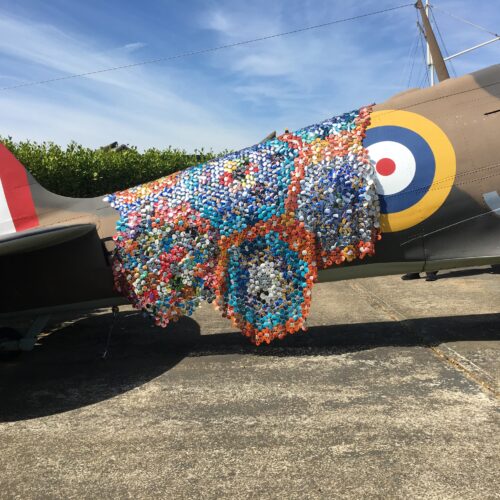
Redefining Handmade
I feel I should start by introducing myself as a new tutor for the Textiles area with the OCA. As I also work as an arts and craft buyer, this week I attended CRAFT, the first of what I hope will be many industry trade shows in London presenting Craft. The show teamed up with HOME and Top Drawer, two other must-attend trade events, where buyers from all over the globe flock to see the latest of new designers / suppliers and strike up profitable negotiations. Previously, I have found such events somewhat commercial and not always the best environment to find products with passion and a strong narrative. This all changed at CRAFT. In their own words:
“The launch of CRAFT is in response to increasing demand from retailers searching for high quality products with provenance; items which are truly unique and original; objects with heart, soul and individuality. CRAFT is the place where professional buyers will discover just such products.”
As designers, we often find ourselves pandering to demand for the mass produced and commercially obvious. However, one should take comfort in the fact that there is an increasing demand for originality in commerce. Stand strong when considering the marketing of your own work and take pride in its provenance. However do not neglect to identify a manageable production line, in order to confidently communicate how long it would take to produce the work being ordered. Never let a buyer down and work to relieve the stress of unrealistic expectations.
At CRAFT, there were many makers and designers working in different areas but for now, I want to look specifically at a designer company called N and N, to give you inspiration and perhaps aspirations towards a commercial career in textiles.

N and N was created in 2011 by Textile Designer Emma Jeffs. It is a design company offering a range of thin and wide scarves. The scarf pictured is digitally printed on both sides onto high quality heavy weight woven silk satin with hand pin fringe detail. The fabric is printed to order and the price for this scarf is £350. Expensive you might say! Totally understandably, though there is a growing market for luxury goods and as it seems we, the consumer, are adding increasing value to the concept of originality and quality in design.
Digital printing has allowed us a clean and quick method of exploring textile ideas to a professional and industry standard, and whilst it is still expensive there are more and more companies offering small scale prints at relatively reasonable rates; for example an A5 sample for £4.50 from Bags of Love and student discounts are available from industry standard agencies such as the Silk Bureau .
In my mind digital textile is best utilised when combined with hand skills such as embroidery and constructed textile methods. Those that I am sure you are all exploring as your undertake your assignments. Those of you interested in textile art and the hybrid spaces between practices; pictured is a piece of work by Lithuanian Textile Artist Lina Jonikė, who perfectly exemplifies how one can work with digital printing and retain the tactile qualities of textiles in a conceptual and sophisticated manner.


Genevieve Sioka






The scarves look beautiful. Why am I thinking of Sugimoto and the cost of the scarves he created for Hermes http://editeur-en.hermes.com/editions/h3-hiroshi-sugimoto/couleurs-de-l-ombre.html
Welcome to OCA Genevieve as well. I’m studying photography but I always seem to head for the textiles when I visit Graduate Shows.
Thank you for articulating the area that really interests me; ‘the hybrid spaces between practices’.